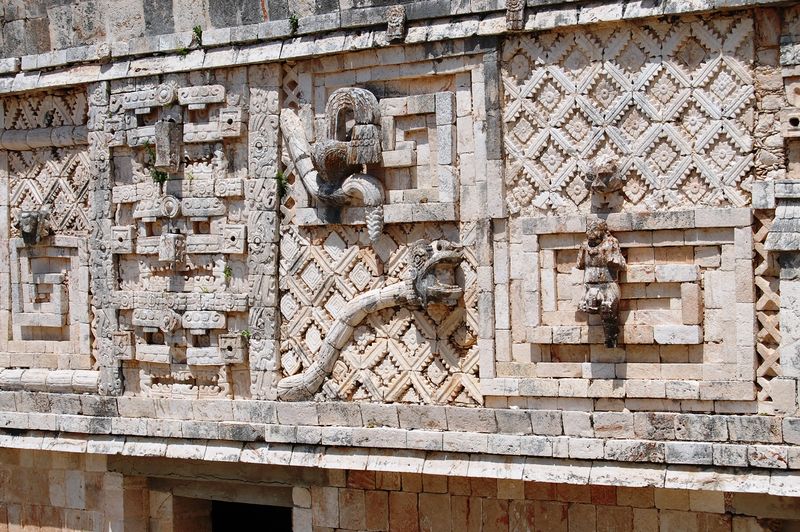By Julie R Butler
Do you know what the names of the Mexican states mean? Some honor important men, while most highlight the geography, natural resources, or people of the region in vivid terms. The majority of them derive from indigenous languages. And with the origins of many being obscured by time, there’s a touch mystery and magic attached to today’s familiar Mexican state names.

Mexican States Named After People or Distant Places
Guerrero is named after Vicente Guerrero, a leader of the Mexican War of Independence.
Hidalgo honors war hero and Father of the Nation Miguel Hidalgo y Costilla.
Morelos honors José María Morelos y Pavón, a brilliant military strategist and organizer during the struggle for independence.
Andrés Quintana Roo was an influential politician, lawyer, and author during the Mexican War of Independence.

San Luis Potosí honors Louis IX of France – and invokes the rich silver mines of Potosí in Bolivia for good luck.
Durango was named after a town in the Basque Country of Spain.
Nuevo León honors the Spanish Kingdom of León.
Mexican State Names with European Origins
Aguascalientes gets its name from the hot springs in the area.
California may come from the Latin calida fornax, “hot furnace.” Or, it could trace back to the 11th-century epic poem Song of Roland about the battles of Charlemagne.
The capital city of Puebla was originally called “Puebla de los Ángeles,” after Bishop Julián Garcés had a vision of angels descending from heaven to design the new city.
Upon arriving in Mexico on Good Friday of the year 1519, Hernán Cortéz dedicated the city now called Veracruz to the “True Cross” by naming it “Villa Rica de la Vera Cruz.”

Mexican State Names Originating from Nahuatl
Chiapas comes from Nahuatl chia (chia seeds) and apan (river), creating the name they gave the ancient Mayan city of Chiapan.
Chihuahua may derive from the Nahuatl word xicuahua and mean “dry and sandy place,” or come from other words meaning “between two rivers” or “the place of the perforated rock.”
Coahuila seems to combine the Nahuatl words coatl (serpent) and huila (to fly). An alternative theory is that it comes from quautli (trees) and la (abundance), for the pine-oak forests of the Sierra Madre Oriental.
Colima derives from the Nahuatl colimán (old mountain or volcano) and maitli (where the old god rules).

Jalisco comes from the Nahuatl xālixco, “sandy place.”
Mexico originates from the Nahuatl mexitli, meaning “navel of the moon.” The words metztli (moon), xictli (naval), and co (place) refer to the island city-state of Tenochtitlan on Lake Texcoco.

Michoacán, the home of the Purépechas and Lake Pátzcuaro, has a Nahuatl name that comes from the words mich (fish), hua (to have), and can (place).
Oaxaca derives from the Nahuatl word huāxyacac, the name for Leucaena leucocephala trees found around Oaxaca City that produce an edible pod called guaje.
Tlaxcala likely originates from the Nahuatl word tlaxcallān, “place of maize tortillas.”
Zacatecas comes from Nahuatl zacatēcah, “place of abundant grass.”
Mexican State Names Deriving from Other Indigenous Languages
Campeche is named after the Mayan city of Can Pech. The literal translation from Mayan means “snake and tick,” although it could also mean “place of Señor Sun Tick.”

Tabasco was the Mayan name of a river in the region, according to the chronicles of Bernal Díaz del Castillo.
Yucatán appears to actually come from Tobasco, where the Chontal Maya people, who call themselves Yokot’an, are from.
Guanajuato originates from Purépecha quianax (frog) and huasta (hill), describing the shape of the low, gentle mountains of the region.

Querétaro likely comes from the Purépecha word créttaro, “craggy place.”
The Cora people of Nayarit call themselves Náayerite in honor of one of their leaders.
Sinaloa probably comes from the Cáhita people of the region, with sina and lobola meaning “round pitahaya,” the bright red fruit of a cactus that grows there.

While there are legends about Sonora having to do with the word “señora,” historians believe it comes from the Opata word xunut or sonot (corn) and means “place of the corn.”
Tamaulipas comes from Huasteca, with the word tamaholipa translating to either “high mountains” or “place of much prayer.”
Celebrating Mexico’s Diversity
As you’ve seen each Mexican state name celebrates in some way the vibrant flavors, traditions, cultures, or history of the diverse people of Mexico.
References:
- https://en.wikipedia.org/wiki/List_of_Mexican_state_name_etymologies
- https://www.nationsencyclopedia.com/mexico/
- http://etimologias.dechile.net/

